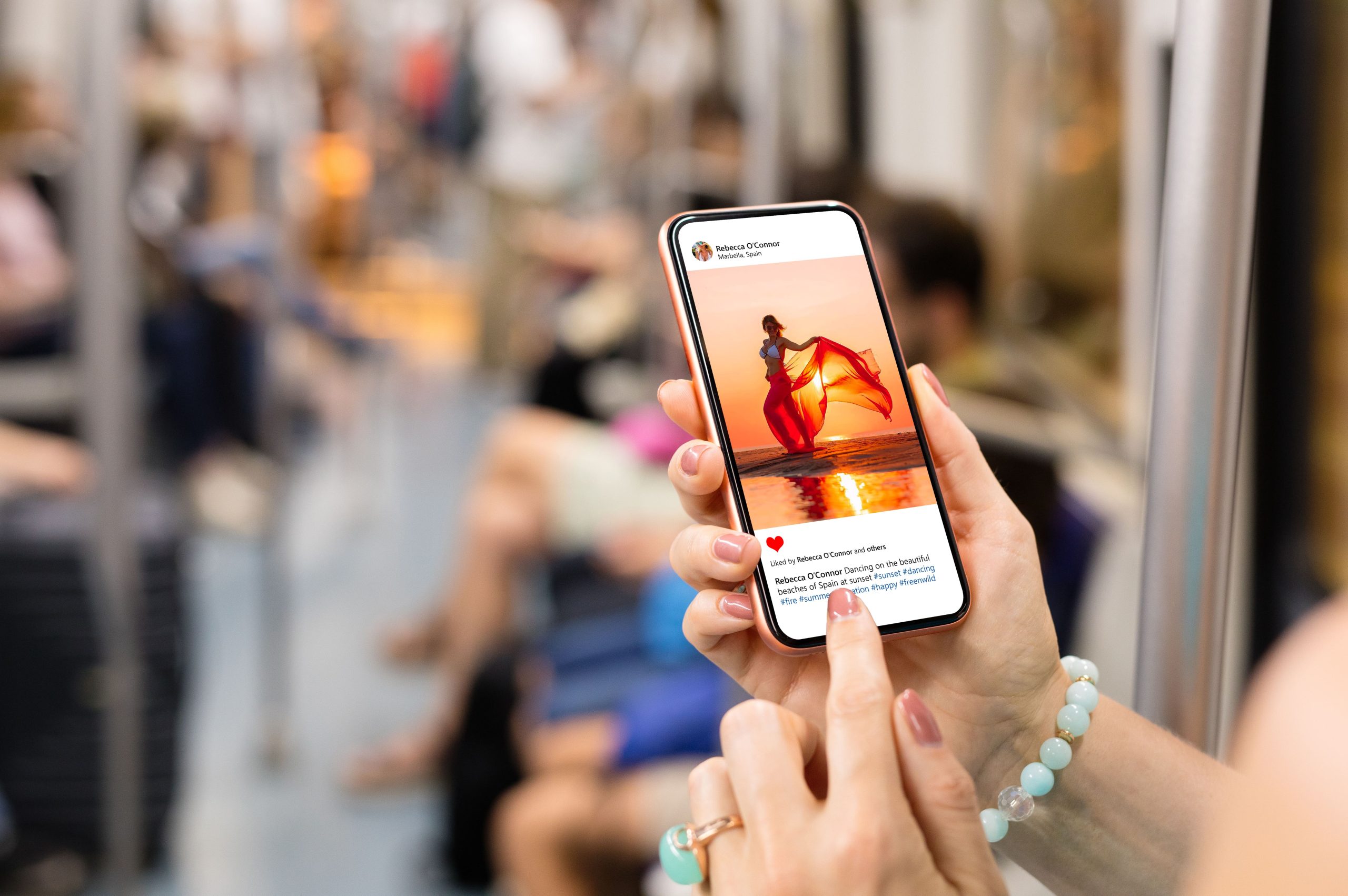Influencer marketing has become a cornerstone of modern brand strategy, offering a unique blend of authenticity, reach, and engagement that traditional advertising often struggles to match.
However, like any powerful tool, it can be a double-edged sword. Missteps in your influencer marketing campaign can lead to wasted resources, damaged brand reputation, or even legal trouble. To help you navigate this dynamic landscape, we’ve compiled a list of the top 18 mistakes to avoid in your next influencer marketing campaign.
#1 Choosing the Wrong Influencer
Partnering with an influencer who doesn’t align with your brand’s values or target audience can lead to ineffective campaigns.
What to Do Instead
Thoroughly research potential influencers, taking into account your brand’s audience demographics, content style, and values. Make sure that the influencer aligns with your brand before partnering with them.
#2 Ignoring Engagement Rates
While follower counts are important, engagement rates often provide a more accurate picture of an influencer’s impact. According to a study by Influencer Marketing Hub, micro-influencers typically have higher engagement rates and can generate 7x more engagement than influencers with larger followings.
What to Do Instead
Rather than focusing solely on follower counts, you should prioritize engagement rates. This includes likes, comments, shares, and saves. High engagement rates often indicate a more engaged and responsive audience.

#3 Neglecting to Set Clear Goals
Without clear goals, it’s impossible to measure the success of your campaign.
What to Do Instead
Set clear, measurable goals for each influencer marketing campaign. Identify what you want to achieve with the campaign: increasing brand awareness, driving website traffic, generating sales or leads, or improving brand sentiment.
Make sure that each goal is specific, measurable, achievable, relevant, and time-bound (SMART). This will help you measure the success of your campaign and make data-driven decisions for future campaigns.
#4 Overlooking Micro-Influencers
Micro-influencers often boast higher engagement rates and more niche audiences than their more famous counterparts. They can be a cost-effective way to reach a highly engaged and targeted audience.
What to Do Instead
Consider partnering with micro-influencers instead of only targeting influencers with large followings. They can be especially effective for niche markets or products. Thoroughly research potential micro-influencers to ensure their values, audience demographics, and content style align with your brand.
#5 Failing to Disclose Partnerships
The FTC requires influencers to disclose their relationships with brands. Failure to do so can result in hefty fines and damage to your brand’s reputation.
What to Do Instead
To comply with FTC guidelines and maintain audience trust, you should ensure that the influencers you’re working with disclose their relationship with your brand. This can be done through #ad or #sponsored hashtags or through clear verbal or written statements in the content.

#6 Not Defining the Campaign’s Scope
A well-defined campaign scope can prevent misunderstandings and ensure smooth collaboration. This includes outlining the number of posts, type of content, timelines, and compensation.
What to Do Instead
Clearly define the scope of the campaign, including the number of posts, type of content, timelines, and compensation. This can help prevent misunderstandings and ensure smooth collaboration with the influencer.
Ensure that both parties understand the expectations and requirements for the campaign before entering into an agreement. Clearly outlining the campaign scope can also help you measure the success of the campaign against the goals you set.
#7 Over-Controlling Content
Influencers know their audience best. While providing guidelines is important, giving them creative freedom often leads to more authentic and engaging content.
What to Do Instead
Provide influencers with guidelines for the content, but give them creative freedom to create authentic and engaging content that resonates with their audience.
- Trust that the influencers know their audience best and will create content that aligns with your brand’s values and messaging.
Avoid dictating every detail of the content, as this can lead to less authentic and genuine content that may not resonate with the audience. Remember that one of the benefits of working with influencers is their ability to create content that feels natural and authentic to their followers.
#8 Neglecting to Vet Content
While influencers should have creative freedom, vetting their content to ensure it aligns with your brand and won’t cause any PR issues is crucial.
What to Do Instead
While giving influencers creative freedom, marketers should still vet the content to ensure it aligns with the brand’s values and won’t cause any PR issues. This includes checking for inappropriate or offensive content and ensuring the brand is represented accurately and positively.
Ensure that the content is aligned with the guidelines provided and that the messaging is consistent with the brand’s overall message. Vetting the content can help prevent any potential issues and ensure that the campaign is successful and positively received by the audience.

#9 Not Tracking Metrics
Tracking metrics is essential to measure the success of your campaign. It’s important to clearly understand which metrics are most important to your specific campaign goals and to track them consistently throughout the campaign.
What to Do Instead
Start tracking key metrics for each campaign to measure its success and inform future strategies. Key metrics include engagement rate, reach, impressions, clicks, and conversions.
This will enable you to see what is and isn’t working and make data-driven decisions about how to adjust your strategy moving forward. Additionally, tracking metrics can help you evaluate the ROI of your campaign and justify the investment to stakeholders.
#10 Ignoring Negative Feedback
Negative feedback can provide valuable insights into how your brand or product is perceived. Addressing these concerns can turn critics into advocates and improve your brand image.
What to Do Instead
Instead of ignoring negative feedback, marketers should address it head-on. This could involve responding to comments, making changes based on the feedback, or even turning the feedback into an opportunity to improve and show excellent customer service.
#11 Not Building Long-Term Relationships
One-off partnerships rarely yield the same results as long-term collaborations. Building relationships with influencers can lead to more authentic endorsements and better audience reception.
What to Do Instead
Aim to build long-term relationships with influencers instead of focusing on one-off partnerships. Building relationships takes time and effort, but the benefits can be significant. Long-term collaborations can lead to more authentic endorsements, better audience reception, and more successful campaigns over time.
Additionally, repeatedly working with the same influencer can help establish trust and familiarity with your brand, which can translate into increased loyalty and advocacy. Remember to treat influencers as partners rather than just spokespeople and to invest in building genuine relationships with them over time.
#12 Failing to Diversify
Relying on a single influencer or platform is risky. Diversifying your influencer portfolio can help you reach a broader audience and safeguard against unforeseen issues.
What to Do Instead
Diversify your influencer portfolio to reach a broader audience and reduce dependence on a single influencer or platform. Relying on a single influencer or social media platform can be risky, as issues with that influencer or platform can significantly impact your campaign.
By working with multiple influencers across different platforms, you can safeguard against unforeseen issues and ensure your message reaches a wider audience. Remember to choose influencers whose audiences align with your target demographic and consider working with influencers on emerging platforms to stay ahead of the curve. Diversifying your influencer portfolio can help you create a more robust and effective marketing campaign.
#13 Overlooking Cultural Sensitivities
In today’s globalized world, awareness of cultural sensitivities is crucial. An influencer’s insensitive or offensive content to certain cultures can harm your brand’s reputation.
What to Do Instead
Pay attention to cultural sensitivities when working with influencers. Insensitive or offensive content can harm your brand’s reputation and alienate potential customers. To avoid this, marketers should take steps to ensure that the influencer’s content is sensitive to different cultures.
This includes understanding the cultural context in which the content will be viewed and ensuring it is respectful and inclusive. Ensure that your guidelines and messaging are clear and considerate and that you work with influencers who share your values and commitment to inclusivity. Being culturally sensitive and respectful can create a more positive and effective marketing campaign.
#14 Neglecting to Use Affiliate Codes
Affiliate codes not only incentivize influencers to promote your product but also allow you to track the success of individual partnerships.
What to Do Instead
Consider using affiliate codes as part of your influencer marketing strategy. Affiliate codes not only incentivize influencers to promote your product but also allow you to track the success of individual partnerships.
- When an influencer shares their unique affiliate code with their followers, it can encourage those followers to make a purchase and gives the influencer a commission on sales. This incentivizes the influencer to promote the product and can lead to increased engagement and conversions.
Additionally, tracking the success of each partnership through affiliate codes can help you identify which influencers are driving the most sales or engagement and adjust your strategy accordingly.
Remember to set clear guidelines for the use of affiliate codes and to choose influencers whose audiences align with your target demographic. With the right approach, affiliate codes can be a valuable tool for driving results in your influencer marketing campaigns.

#15 Not Adapting to Changes
The digital landscape is constantly evolving. Brands that fail to adapt their strategies to changes in algorithms, platform popularity, or consumer behavior risk falling behind.
What to Do Instead
Marketers should continuously monitor trends and keep an eye on emerging platforms and features that could impact their campaigns. You can maximize reach and engagement by staying ahead of the curve and adapting your strategies accordingly.
Remember to be flexible and willing to try new approaches while also staying true to your brand’s values and messaging. Adapting to changes in the digital landscape can be challenging, but it’s essential for staying competitive and driving results in your influencer marketing campaigns.
#16 Overlooking the Importance of Authenticity
Influencer marketing works best when endorsements feel genuine. A study by Stackla found that 90% of consumers say authenticity is important when deciding which brands they like and support.
What to Do Instead
Instead of pushing for scripted endorsements, marketers should encourage influencers to share their genuine opinions about the product or brand. Authenticity resonates with audiences and can lead to more trust and credibility for the brand.
#17 Not Having a Crisis Management Plan
Influencer marketing can sometimes go awry; when it does, it’s crucial to have a crisis management plan. This can help mitigate damage to your brand’s reputation and ensure a swift and appropriate response.
What to Do Instead
Marketers should have a crisis management plan in place for their influencer marketing campaigns. This plan should outline how to respond if something goes wrong, such as a negative backlash from a post or an influencer controversy. Having a plan can help mitigate damage to the brand’s reputation and ensure a swift and appropriate response.
#18 Failing to Learn from Mistakes
Every campaign provides valuable lessons. Whether a campaign was a resounding success or fell flat, there’s always something to learn. Analyzing what worked and what didn’t will help refine your future strategies. According to a survey by Influencer Marketing Hub, 63% of marketers plan to increase their influencer marketing budget in the next year, indicating a willingness to learn and improve.
What to Do Instead
Instead of viewing unsuccessful campaigns as failures, marketers should view them as learning opportunities. You can refine your strategies and improve your future campaigns by analyzing what worked and what didn’t.
Key Takeaways
When done right, influencer marketing can be a powerful tool for brands. By avoiding these common mistakes, you can maximize the potential of your influencer marketing campaigns and truly connect with your audience. Remember, the key to a successful influencer marketing campaign lies in authenticity, careful planning, and continuous learning.
In the dynamic world of influencer marketing, staying informed and adaptable is crucial. As you embark on your next influencer marketing campaign, consider these potential pitfalls and strive to create genuine, engaging, and mutually beneficial partnerships with your influencers.
Influencer marketing can help your brand reach new heights with the right approach. So, go forth and collaborate, innovate, and, most importantly, learn from your journey. Here’s to your success in your next influencer marketing campaign!
